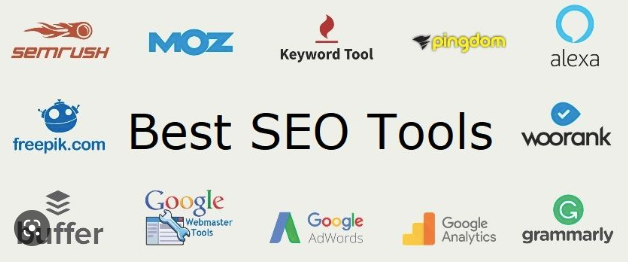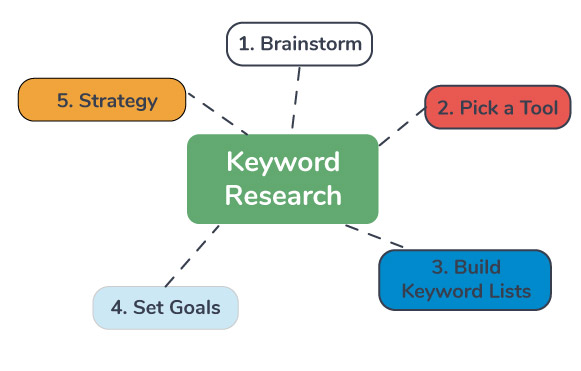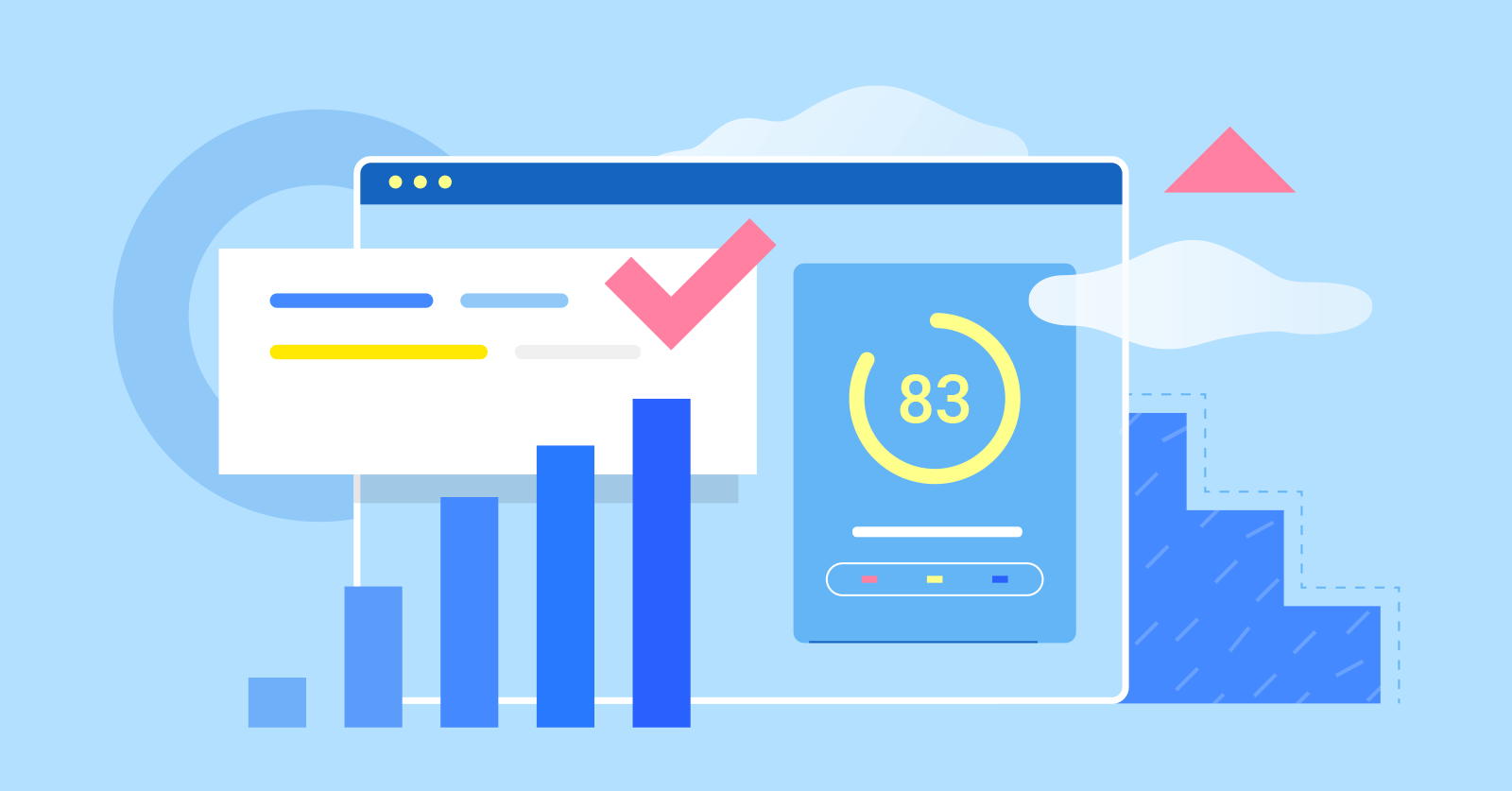"SEO for beginners"

1. Introduction
- Brief explanation of what SEO (Search Engine Optimization) is.
- Importance of SEO for websites and online businesses.
- What beginners can expect to learn from this article.
2. What is SEO?
- Simple definition of SEO: Optimizing a website to rank higher in search engine results.
- How SEO helps improve visibility and drive organic traffic.
- Key players in SEO: Google, Bing, and other search engines.
3. Why is SEO Important?
- Benefits of SEO:
- Increased visibility and web traffic.
- Cost-effective compared to paid advertising.
- Builds credibility and trust with users.
- Role of SEO in digital marketing strategies.
4. Key Components of SEO
On-Page SEO:
- Optimizing content with relevant keywords.
- Writing clear meta titles and descriptions.
- Using proper headings (H1, H2, etc.) and internal linking.
Off-Page SEO:
- Importance of backlinks for credibility.
- Building authority through guest posting and partnerships.
- Social media and brand mentions as indirect ranking factors.
Technical SEO:
- Ensuring your website is mobile-friendly and fast-loading.
- Fixing broken links and optimizing site structure.
- Understanding how search engines crawl and index websites.
Local SEO (Optional for Beginners):
- Targeting local audiences through Google My Business.
- Importance of local keywords and online reviews.
5. How Search Engines Work (For Beginners)
- Explanation of crawling, indexing, and ranking.
- How search engines use algorithms to rank pages.
- The role of keywords in connecting user queries to content.
6. Step-by-Step SEO Guide for Beginners
Keyword Research:
- What are keywords and why they matter.
- Introduction to free tools like Google Keyword Planner or Ubersuggest.
Content Creation:
- Writing high-quality, user-focused content.
- Importance of addressing search intent (informational, navigational, transactional).
Optimize Your Website:
- Basics of improving page load speed and usability.
- How to make your website mobile-friendly.
Build Backlinks:
- Simple ways for beginners to gain backlinks (e.g., blog outreach, sharing on social media).
Track Performance:
- Introduction to tools like Google Analytics and Google Search Console.
- How to monitor website traffic and rankings.
7. Common SEO Mistakes to Avoid
- Overstuffing keywords in content.
- Ignoring mobile optimization.
- Focusing only on search engines instead of user experience.
- Using low-quality or spammy backlinks.
8. Free and Beginner-Friendly SEO Tools
- Google Keyword Planner (keyword research).
- Google Search Console (performance tracking).
- Ubersuggest (keyword ideas).
- Yoast SEO (for optimizing WordPress sites).
9. Benefits of Learning SEO for Beginners
- Helps drive organic traffic without paid ads.
- Builds foundational skills for a career in digital marketing.
- Empowers small businesses or personal projects to grow online.
10. Conclusion
- Recap of why SEO is essential and how beginners can start.
- Encouragement to take small, consistent steps to learn and apply SEO.
- Call-to-action to explore free tools and resources to deepen SEO knowledge.
"On-page SEO vs. off-page SEO"

1. Introduction
- Overview of the importance of SEO in digital marketing.
- Brief explanation of on-page SEO and off-page SEO.
- Purpose of the article: understanding the difference and how they work together.
2. What is On-Page SEO?
- Definition: Techniques used to optimize elements within a website.
- Key components of on-page SEO:
- Content Optimization:
- Importance of high-quality, relevant content.
- Role of keywords and search intent.
- HTML Elements:
- Use of meta titles, meta descriptions, and proper headings (H1, H2, etc.).
- Optimizing alt text for images.
- Website Structure:
- Importance of URL structure and internal linking.
- Mobile-friendly design and fast loading times.
- Content Optimization:
3. What is Off-Page SEO?
- Definition: Strategies to improve website authority and reputation outside of the website.
- Key components of off-page SEO:
- Backlinks:
- Importance of high-quality, relevant backlinks.
- Techniques for earning backlinks (e.g., guest posting, outreach).
- Social Signals:
- Role of social media in driving traffic and building brand authority.
- Brand Mentions:
- How unlinked mentions impact SEO.
- Building credibility through PR and online partnerships.
- Backlinks:
4. Key Differences Between On-Page and Off-Page SEO
- Table or bullet points comparing the two approaches:
- Focus (on-page: within the website; off-page: external factors).
- Control (on-page: full control; off-page: limited control).
- Goals (on-page: user experience and content relevance; off-page: authority and trust).
5. How On-Page and Off-Page SEO Work Together
- Importance of balancing both strategies for overall SEO success.
- Example: A well-optimized page with great content (on-page) attracts more backlinks (off-page).
- How a lack of one can impact the other.
6. Tools for On-Page and Off-Page SEO
- On-Page SEO Tools:
- Yoast SEO (WordPress optimization).
- Google Search Console (performance tracking).
- SEMrush or Ahrefs (content optimization).
- Off-Page SEO Tools:
- Ahrefs or Moz (backlink analysis).
- BuzzSumo (content outreach).
- HARO (for earning media mentions).
7. Common Mistakes to Avoid
- Over-optimizing keywords (on-page).
- Building low-quality or spammy backlinks (off-page).
- Ignoring user experience in favor of search engine rankings.
- Neglecting either on-page or off-page efforts.
8. Which Should Beginners Focus on First?
- Start with on-page SEO: the foundation of a well-optimized website.
- Move to off-page SEO once the website is optimized and ready to gain authority.
- Importance of a step-by-step approach for beginners.
9. Conclusion
- Recap of on-page SEO and off-page SEO roles in improving rankings.
- Emphasis on the need for a balanced strategy.
- Call-to-action to start with on-page basics and gradually build off-page efforts.
"Best SEO tools"

1. Introduction
- Brief explanation of why SEO is important for online success.
- The role of tools in simplifying and improving SEO efforts.
- What readers can expect: a list of top SEO tools for different needs.
2. Why Use SEO Tools?
- Save time by automating keyword research, analytics, and reporting.
- Gain insights into website performance and competitor strategies.
- Improve accuracy in tracking rankings, backlinks, and traffic.
3. Categories of SEO Tools
- Keyword Research Tools: Tools to find relevant keywords for content optimization.
- On-Page SEO Tools: Tools to optimize content, meta tags, and site structure.
- Technical SEO Tools: Tools for analyzing and fixing website issues like speed and mobile-friendliness.
- Backlink Analysis Tools: Tools to track and manage backlinks for domain authority.
- SEO Analytics Tools: Tools to measure traffic, rankings, and overall performance.
4. Best SEO Tools for Beginners and Experts
Keyword Research Tools:
- Google Keyword Planner: Free tool for discovering search volume and competition.
- Ubersuggest: Beginner-friendly tool for finding keyword ideas and content suggestions.
- SEMrush: Comprehensive platform with advanced keyword insights.
On-Page SEO Tools:
- Yoast SEO (WordPress Plugin): Optimize content and meta tags for better rankings.
- Rank Math: Alternative WordPress plugin with advanced on-page optimization features.
- Surfer SEO: Helps structure content based on top-ranking pages.
Technical SEO Tools:
- Google Search Console: Monitor website performance and fix indexing issues.
- Screaming Frog: Identify broken links, duplicate content, and technical issues.
- GTmetrix: Analyze and improve website loading speed.
Backlink Analysis Tools:
- Ahrefs: Comprehensive tool for backlink tracking, domain analysis, and competitor research.
- Moz Link Explorer: Monitor and analyze backlinks to your site.
- Majestic: Focuses on link building and backlink profile metrics.
SEO Analytics Tools:
- Google Analytics: Free tool to track website traffic, user behavior, and conversions.
- SEMrush: Includes rank tracking, site audit, and competitive analysis.
- Ahrefs: Provides keyword tracking, traffic insights, and link-building data.
Local SEO Tools:
- BrightLocal: For managing local listings and reviews.
- Moz Local: Ensures consistency in local citations.
- Google My Business: Essential for optimizing local SEO presence.
5. Free vs. Paid SEO Tools
- Benefits of free tools for beginners and small businesses.
- Advantages of paid tools for advanced users and agencies.
- Examples of free tools: Google Search Console, Ubersuggest.
- Examples of paid tools: SEMrush, Ahrefs, Moz.
6. How to Choose the Right SEO Tool
- Identify your goals (e.g., keyword research, technical fixes, backlink tracking).
- Consider your budget (start with free tools, then scale up).
- Test tools using free trials to find the best fit.
7. Tips for Maximizing SEO Tools Effectiveness
- Combine multiple tools to cover different aspects of SEO.
- Use tools consistently to track progress over time.
- Stay updated on tool features and SEO trends.
8. Conclusion
- Recap of the importance of using SEO tools for effective optimization.
- Encourage readers to start with free tools and explore advanced ones as needed.
- Call-to-action to choose tools from the list and start improving SEO efforts.
"Keyword research tips"

1. Introduction
- Brief explanation of what keyword research is and why it’s important in SEO.
- How keyword research helps improve content visibility and drive targeted traffic.
- Overview of what readers will learn from the article.
2. What is Keyword Research?
- Definition: The process of identifying terms users search for on search engines.
- Role of keywords in connecting user queries to content.
- Importance of understanding search intent (informational, navigational, transactional).
3. Why is Keyword Research Crucial for SEO?
- Helps target the right audience.
- Improves rankings on search engine results pages (SERPs).
- Drives organic traffic that converts.
- Provides insights into user behavior and industry trends.
4. Types of Keywords
Short-Tail Keywords:
- Example: “digital marketing.”
- High search volume but broad and competitive.
Long-Tail Keywords:
- Example: “digital marketing strategies for small businesses.”
- Lower search volume but more specific and less competitive.
Branded vs. Non-Branded Keywords:
- Branded: Specific to a brand (e.g., “Nike running shoes”).
- Non-Branded: Generic searches (e.g., “best running shoes”).
Transactional vs. Informational Keywords:
- Transactional: Indicates purchase intent (e.g., “buy laptops online”).
- Informational: Focused on learning (e.g., “how to fix a laptop keyboard”).
5. Keyword Research Tips for Beginners
Understand Your Audience:
- Identify their needs, problems, and search behavior.
- Use tools like Google Analytics to analyze audience demographics.
Use the Right Tools:
- Free Tools: Google Keyword Planner, Ubersuggest, AnswerThePublic.
- Paid Tools: SEMrush, Ahrefs, Moz Keyword Explorer.
Focus on Long-Tail Keywords:
- Easier to rank for and more targeted.
- Cater to specific user intent for higher conversions.
Analyze Competitors:
- Identify keywords your competitors rank for using tools like Ahrefs or SEMrush.
- Look for gaps or underserved topics in their strategy.
Prioritize Keywords Based on Metrics:
- Search Volume: How often a keyword is searched.
- Keyword Difficulty (KD): How competitive it is to rank.
- Cost-Per-Click (CPC): Indicates commercial intent.
Consider Search Intent:
- Match your content type to the intent behind the keyword.
- Example: Use transactional keywords for product pages and informational ones for blogs.
Leverage Local Keywords (If Applicable):
- Include location-based terms for local SEO (e.g., “best coffee shop in NYC”).
Use Question-Based Keywords:
- Keywords framed as questions attract users seeking detailed answers.
- Example: “How does keyword research work?”
Update Keywords Regularly:
- Trends and user behavior change over time.
- Refresh keyword lists periodically to stay relevant.
6. Tools for Effective Keyword Research
- Google Keyword Planner: Free and beginner-friendly.
- AnswerThePublic: Generates keyword ideas based on user questions.
- SEMrush and Ahrefs: Advanced tools for in-depth analysis and competitor research.
- Keyword Surfer: Browser extension for quick keyword insights.
7. Common Mistakes to Avoid in Keyword Research
- Targeting only high-volume keywords (too competitive).
- Ignoring search intent and focusing solely on metrics.
- Overstuffing content with keywords (can harm rankings).
- Failing to track and analyze performance.
8. Benefits of Good Keyword Research
- Attracts the right audience to your website.
- Improves overall SEO strategy and content relevance.
- Increases conversions by targeting high-intent users.
9. Conclusion
- Recap the importance of keyword research as the foundation of SEO.
- Encourage readers to start small, use tools, and practice keyword optimization.
- Call-to-action to apply these tips and see measurable improvements in their SEO efforts.
"How to improve website ranking"

1. Introduction
- Importance of website ranking in driving organic traffic.
- Brief overview of how search engines rank websites.
- What readers will gain: actionable tips to improve rankings.
2. Understanding Website Ranking
- Explanation of website ranking and its impact on visibility.
- Factors influencing rankings:
- Relevance of content.
- User experience.
- Authority and backlinks.
3. Key Strategies to Improve Website Ranking
Optimize Content for Search Intent:
- Create high-quality, relevant, and engaging content.
- Use targeted keywords naturally in titles, headings, and throughout the content.
- Focus on providing value to the reader (solve problems or answer questions).
Enhance On-Page SEO:
- Craft compelling meta titles and descriptions.
- Use proper header tags (H1, H2, etc.) for better readability.
- Add alt text to images for accessibility and better indexing.
Improve Website Speed and Performance:
- Compress images and minimize code for faster loading times.
- Use a content delivery network (CDN) to enhance performance.
- Check speed metrics using tools like GTmetrix or PageSpeed Insights.
Ensure Mobile-Friendliness:
- Implement responsive design for seamless mobile experience.
- Test mobile usability using Google’s Mobile-Friendly Test.
Focus on Technical SEO:
- Fix broken links and redirect errors.
- Submit an XML sitemap to search engines.
- Ensure proper indexing and crawling using Google Search Console.
Build High-Quality Backlinks:
- Earn backlinks from authoritative and relevant websites.
- Engage in guest blogging and link outreach strategies.
- Avoid spammy or low-quality backlinks to prevent penalties.
Leverage Local SEO (If Applicable):
- Optimize your Google My Business profile.
- Include location-based keywords in your content and metadata.
- Encourage customer reviews to boost credibility.
Utilize Social Media Marketing:
- Share website content on social platforms to drive traffic.
- Engage with users to build brand visibility and credibility.
- Encourage social sharing to increase referral traffic.
Monitor and Analyze Performance:
- Use Google Analytics to track website traffic and user behavior.
- Analyze ranking trends and keyword performance with tools like SEMrush or Ahrefs.
- Regularly update and optimize poorly performing pages.
4. Common Mistakes to Avoid
- Keyword stuffing or over-optimization.
- Ignoring mobile users or poor site navigation.
- Relying solely on paid ads without focusing on organic SEO.
- Using black-hat SEO techniques that risk penalties.
5. Tools to Help Improve Rankings
- Keyword Research: Google Keyword Planner, Ahrefs, SEMrush.
- SEO Analytics: Google Search Console, Google Analytics.
- Content Optimization: Yoast SEO, Surfer SEO.
- Technical SEO: Screaming Frog, GTmetrix.
6. Benefits of Improving Website Ranking
- Increased organic traffic and visibility.
- Better user engagement and reduced bounce rates.
- Higher credibility and trust among users.
- Greater conversion rates and business growth.
7. Conclusion
- Recap the essential strategies to improve website ranking.
- Emphasize the importance of consistency and regular updates.
- Call-to-action: encourage readers to implement these tips and monitor their progress.
